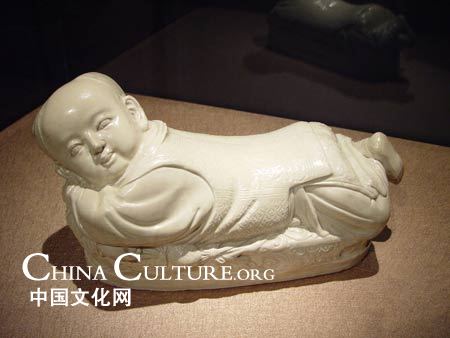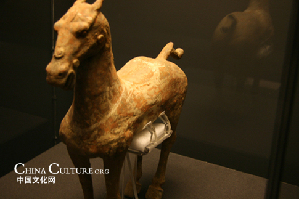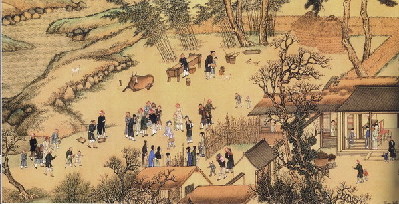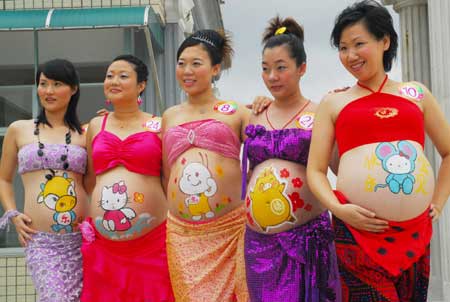| Home > Living in China > Art |
[Video] The Largest Chinese Courtyard: Gongwang Mansion
The best-preserved courtyard house in Beijing is Gong Wang Fu, or the Prince Gong Palace. Covering 5.7 hectares of land in the core area of Beijing, it is the world's largest courtyard house.
The palace is situated on the Western Street of Qian Hai, the northern shore of Shicha Lake, Western District, Beijing. It is a comparatively well preserved Princes'residence in Beijing ?
The palace consists of three lines of buildings which is divided into two parts, the living quarter and garden. The living quarter has five courtyards from south to north in file. From east to west are three-set courtyards, east, middle and west in a row, among which Xijinzhai (former name Qing Yi Hall)
in the western set is best known . It is built by imitating the Ning Shou Gong (Palace of Peace and Longevity) in the Forbidden City, adopting the hook connection structure. A partitioned-off section of a large room with a heating stove is built inside the hall, which is deep and broad, bright and spacious with superb design.
On the central line stand three structures and they are one behind another: the Main Hall, the Rear Hall and a 160-meter-long building with more than 40 rooms. Three courtyard houses shape the east and west lines.
A garden lies at the bake of the residence. Altogether, the complex has over 20 separate areas, and each is a different one in layout and style. Part of the garden inside the Prince Gong's Residence is in the northern side of the living quarter where turning corridor, pavilion, mountain rock, flowers and trees are all in elegant layout. In the stone cave of the rockery above the lake, there is the Emperor Kang Xi's inscription of Chinese character.(Good Fortune).
The designs of the living quarter and the garden of the Prince Gong Residence are imposing and magnificent. Rooms and broad yards are set up in turnings and in a maze,and the scenery of which is exquisite and elicate. In the ancient times there was murmuring stream flowing through the Garden which is similar to the Grand View Garden.
The Grand view Garden is a fictional garden described in Dream of the Red Mansions, one of the best-known Chinese classic novels. But some people believe that the author's description of the fictional garden is based on the Prince Gong Palace since the two have much in common. Others challenge this view. Whether it is the Grand View Garden or the Prince Gong Palace ,it is likely to remain a mystery forever.
It's a status symbol. Most residences of Qing Dynasty nobles are distributed in the inner city, and this has to do with the court's residence restrictions for the citizens. In layout, Beijing is like a series of overlapping squares with the Forbidden City at the center. The belt area surrounding the Forbidden City is for buildings housing central government departments. The third belt area is for the residences of nobles, and that is where existing mansions are distributed. Further outside, in the fourth belt and beyond,was where ordinary people live.
The masters of this Palace have changed a lot. In the beginning it belonged to He Shen, Councilor of the Court who was criminated in the fourth year of Emperor Jia Qing's reign (1799) resulting in the onfiscation of the residence. The Emperor then bestowed it to his younger brother, Yong Lin and named it Palace of Prince Qing. When Emperor Xian Feng came to reign, he took it back, granted to his younger brother Yi Su and named it Prince Gong's Residence. Since it is owned by Yi Xin, one of the highest-ranking obles of the Qing Dynasty, the Prince Gong Palace is not only big but also of high standards. This is reflected in its five-room facade and great number of rooms, including 12 halls and seven bedrooms. It was against the rules for lower ranking officials to have a residence of the same caliber. The presence of stone lions in front of the residences shows that their owners were officials above Rank Five (in feudal society Chinese officials were divided into nine ranks).
The number of hair knots on the stone lions further indicates their ranking in the hierarchy: the emperor is entitled to 13 lines of hair knots, princes 12 lines, and so on in descending groups for officials of different ranks. House style and tile color have to follow strict rules, too. He Shen, was ordered by the emperor to kill himself. One of his crimes is his construction of a hall which is similar in style to the emperor's Ningshou Hall. Reflection of officials status in the architectural styles of their residences is a striking feature of China's feudal hierarchical system. Prince Gong Palace is a rare example.
Play the first clip if you have already been in China. The second is for the rest visitors.
Art
 more
moreClassic Chinese Handicraft:
Porcelain pillows, as classic Chinese handicraft,

Chinese Treasures Returned from
As witness of Chinese culture and custom, countless treasures

The lost legacy: classical music
Accompany by the long history of China, Chinese classical music

Customs
 more
moreChinese Kungfu
Kungfu Taste: Learn Martial Art in Shaolin Temple
The mention of Shaolin Temple conjures up images of a quiet and
Keet Kune Do will reappears on screen: BRUCE Lee and
The Legend of Bruce Lee is shot by China Central Television
The Road to the Olympic Games for Wushu
Wushu, also called kungfu, martial arts, is attracting more and more




 print
print  email
email  Favorite
Favorite  Transtlate
Transtlate 
